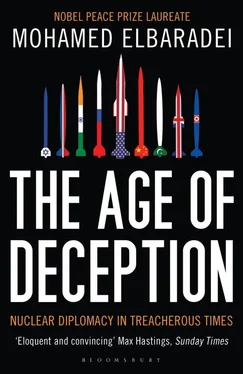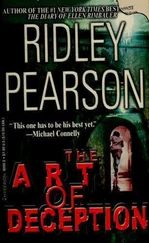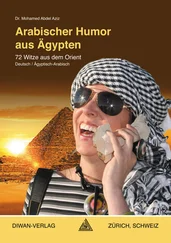We learned as well that, as in other any market, both buyers and sellers took the initiative. Iran, for example, had made independent attempts to procure nuclear and dual-use equipment in multiple other countries in addition to meeting with Kahn’s people. A senior official from South Africa’s Atomic Energy Commission told me that, in the mid-1990s, the Iranian minister of energy tried to purchase sensitive nuclear technology from South Africa. The offer was rejected; South Africa had recently joined the NPT, and their “technology” was not for sale.
The network’s methods were often ingenious. Procurement of tightly controlled components—anything that might raise an eyebrow because of the source government’s export controls—customarily was done through an intermediary, using false end-user certificates to camouflage the final destination. As in the case of SCOPE, the supplier was often unaware of the end use—particularly when the component or material also had an application in oil drilling, water treatment, or other industrial operations.
Sometimes the intermediary was a real company; on other occasions, Khan’s affiliates would set up a shell company in Dubai, complete the transaction, and then close the company down. Payments were made using accounts in yet another country, so the transaction was difficult to trace. Iran was known to have delivered some of its largest payments in cash; Khan would then use Dubai gold dealers or other businesses accustomed to handling large amounts of currency to launder the money.
One of Khan’s simplest and most valuable products was his extensive list of contacts: individuals and companies that could produce or procure the technologies and materials essential to building a nuclear program. During his employment in the Netherlands, for example, he worked on high-strength, or maraging, steel metallurgy for Fysisch-Dynamisch Onderzoek (Physics Dynamics Research) laboratory, a subcontractor of URENCO. He had direct knowledge of the engineering and production firms that could supply maraging steel, an essential material for certain centrifuge rotors. His contacts at those companies gave his clients a foot in the door.
One of the network’s more elaborate projects took place in South Africa, at a factory in Vanderbijlpark, a small mining town not far from Johannesburg. It involved the construction of modular process systems for uranium enrichment, minus the centrifuges. The systems were otherwise complete, equipped with the pumps, valves, feed autoclaves, stainless-steel vessels, and auxiliary piping needed to direct the flow of UF 6into centrifuge cascades. The cascades were configured in stages that would enrich the incoming natural uranium, first to 3.5 percent U-235, and eventually to a high-enriched weapons grade of 90 percent. The factory owner referred to the systems as “a work of art.”
In September 2004, South African police, acting on a tip-off in conjunction with South African counterproliferation officials [4] The officials were from the Council for the Non-Proliferation of Weapons of Mass Destruction, an agency of the South African Government.
and IAEA inspectors, converged on the factory. The systems had been dismantled piece by piece and placed into containers, ready for shipment.
The revelation of this extensive operation in South Africa was particularly surprising to nuclear experts. South Africa had, after all, long ago relinquished its nuclear weapons program. Its leaders had become outspoken advocates of nuclear nonproliferation and disarmament. This discovery of ongoing private clandestine nuclear activity emphasized the need for more focused national efforts to monitor manufacture and commerce relevant to nuclear and dual-use exports.
South Africa was by no means the only country involved. The details of the network, emerging piecemeal, read like an erratic travelogue. A German supplier had provided the vacuum pumps. A middleman in Spain had supplied two specialized lathes. A Swiss consultant had traveled to Malaysia to produce centrifuge parts based on Pakistani designs that had originated in the Netherlands. A Hungarian-born Israeli ex–military officer working in South Africa was arrested at a ski resort in Aspen, Colorado, for his role in supplying Pakistan with triggered spark gaps, which can be used in nuclear weapon detonators. A British engineer had prepared the plans for the Libyan machine shop set up to produce centrifuge components. Special furnaces were procured from Italy. Frequency converters and other electronics had been manufactured in Turkish workshops using parts imported from elsewhere in Europe. All in all, the IAEA’s investigations would ferret out links to more than thirty companies in as many countries.
It was only a year earlier that the IAEA had been searching in Iraq for weapons that were not there. Now, in early 2004, it seemed that wherever we turned we came across tangible new evidence of nuclear proliferation. Libya had confessed to its nuclear weapons ambitions. North Korea was approaching construction of its first nuclear weapon. Iran had recently unveiled, after painstaking investigation, the results of a two-decade-long program to obtain the nuclear fuel cycle. And we had no confidence that we knew how far or where the Khan network had spread.
On February 12, 2004, I published an op-ed in the New York Times entitled “Saving Ourselves from Self-Destruction,” in which I drew attention to the emergence of the Khan network and noted that both halves of the proliferation marketplace, supply and demand, were flourishing. I proposed a series of measures that would disrupt this trend: toughened export controls; universal sign-on to the Additional Protocol; a prohibition against withdrawal from the NPT; a revival of negotiations over the Fissile Material Cutoff Treaty, [5] In 1993 the UN General Assembly adopted Resolution 48/75L, calling for the negotiation of a multilateral treaty to ban production of fissionable material for weapons. The negotiations remain stalled in the Conference on Disarmament in Geneva.
which would prohibit the production of nuclear materials for weapons use; increased security for existing nuclear material; and for countries possessing nuclear weapons, a road map for disarmament.
But I realized that these steps addressed only the mechanics of the situation. The true causes of the problem were rooted much deeper, in the extreme economic and social inequalities that prevailed between North and South, the asymmetry of the global security system with its double standards, and the conflicts and tensions that continued to fester in specific regions. “We must also begin to address the root causes of insecurity,” I urged in the article.
In areas of long-standing conflict like the Middle East, South Asia and the Korean Peninsula, the pursuit of weapons of mass destruction—while never justified—can be expected as long as we fail to introduce alternatives that redress the security deficit. We must abandon the unworkable notion that it is morally reprehensible for some countries to pursue weapons of mass destruction, yet morally acceptable for others to rely on them for security—and indeed to continue to refine their capacities and postulate plans for their use.
Similarly, we must abandon the traditional approach of defining security in terms of boundaries—city walls, border patrols, racial and religious groupings. The global community has become irreversibly interdependent, with the constant movement of people, ideas, goods and resources. In such a world, we must combat terrorism with an infectious security culture that crosses borders—an inclusive approach to security based on solidarity and the value of human life. In such a world, weapons of mass destruction have no place.
Just days before my article was to be published, I received word that President Bush was about to introduce his own set of counterproliferation measures, in a speech on February 11 at the National Defense University in Washington. The New York Times agreed to delay the op-ed by a day or two, so it would not appear that I was trying to preempt Bush.
Читать дальше












